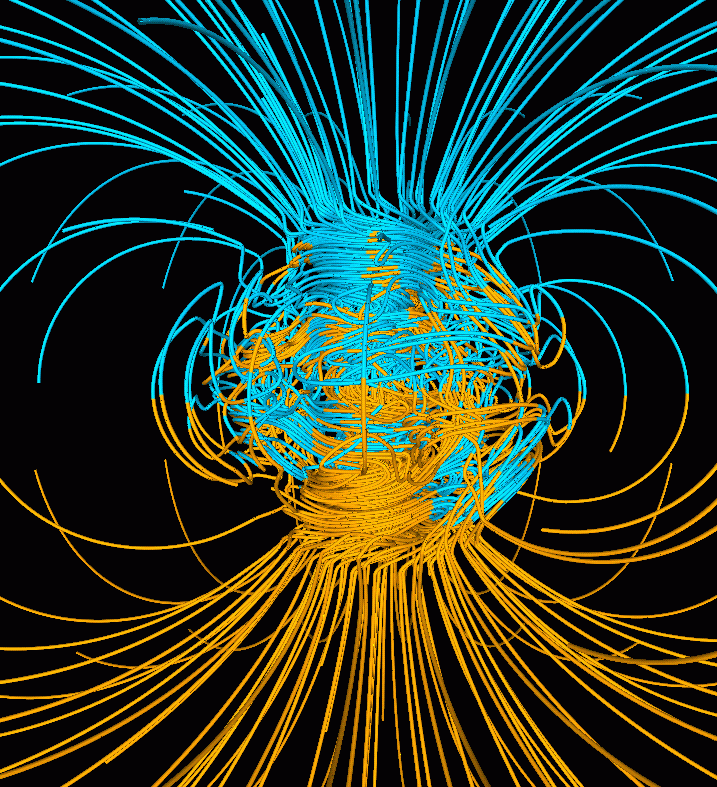

MATRIX (MAgnetism, TRauma and acceleratIon eXperiment)
Emma Willett, Joel Swallow, Maggie Wang
The MATRIX payload will be a collaboration between three students and has three main aims.
The first objective is to measure the Earth's magnetic field during the flight. They hope to detect the changes in field strength and direction, possibly even determining the oreintation of the payload structure through the whole flight profile.
The second aim is to collect temperature and pressure data, detailing the traumatic conditions faced by all payloads.
The third and final objective of MATRIX is to measure and record accelerations during the flight. They will also atempt to measure the 0.1m/s/s reduction in gravity strength felt at 30km altitude.
yxw572@student.bham.ac.uk - emw575@student.bham.ac.uk - jxs480@student.bham.ac.uk

Milli-gravity investigation
Lawrence Shere
One of the awe inspiring sights in space travel is an object floating around, unshackled by the pull of gravity. In this project Lawrence will see if he can demonstrate weightlessness. When the balloon reaches its apogee, it explodes and the payload is briefly in a state of free-fall before the parachute bites into the atmosphere. As the payload is falling through very thin atmosphere, it is his hope that objects inside the balloon payload will become weightless (air drag negligible) and therefore appear to float for a short time.
To demonstrate the weightless effect Lawrence will have a small object (An Astronaut model tethered by life line) inside a box, filmed by a small camera.
ics226@student.bham.ac.uk

RADS (RADiation and coSmic ray detector)
Harriet Snell, Emma Willett, Kristian Zarebski, Graham Kirkby
The variation of radiation levels at high altitude are a current topic of scientific interest. Space weather can cause these levels to change dramatically for short periods. Aquisition of even limited data can be useful for increasing knowledge of this phenomenon and protecting those that are exposed for long periods such as aircraft pilots. Simple and cheap electronics exists to measure some types of radiation.
Harriet will focus on sending a smartphone with Gemini 2 and use an app called CRAYFIS to detect cosmic rays. Using this, the difference between the radiation via cosmic rays in the upper atmosphere and the radiation on the earth can be measured, which can be done by setting up a control on the ground at the same time.
An Arduino Gieger counter will also be flown to detect all types of ionising radiation.
hxs325@student.bham.ac.uk

Particles in the stratosphere
Nicholas Davidson
Measurement of modern stratopheric particulates is of current research interest. Nicholas' research group is concerned with particulate air pollution. They are hoping to be able to adapt a personal sampler that collects particles into a filter at set times, so that it can withstand the conditions of high altitude and gather particulates from the air to see how their sources and chemical composition vary compared to samples collected close to the ground. This will help to improve our understanding of how particulate air pollution covers long distances.
nmd304@student.bham.ac.uk

Wind Speed Sensor
James Delaney
James' idea idea is to mount a wind speed sensor on the Gemini 2 payload structure. He is looking to see how measured wind speeds corrispond to movements of the payload and hopes to interface the sensor with our onboard data logger to capture data throughout the flight.
jxd261@student.bham.ac.uk

Extreme Gardening
Isaac Stollery, Iustin Irimescu, Lawrence Shere
The stratospheric environment is very similar to that of Mars in terms of pressure, temperature and radiation levels. Determining a system for plant life to survive and even thrive to provide food is a current topic of human space exploration efforts.
This project will subject a range of plant life to stratospheric conditions and determine the extent of the harmful effects. If there is sufficent lifting capability available, a plant "Space Capsule" will be flown. This will hopefully provide enough protection that the plant contained within will survive the trip to the edge of space!
ijs516@student.bham.ac.uk

Solar Resistive Heater
Iustin Irimescu, Lawrence Shere
Following on from his payload on Gemini 1, Iustin plans to send another solar panel on
Gemini 2. His aim is to aid the gardening experiment with a resistive heating device. He hopes to provide additional heat to the plants, to protect them from the very low temperatures they will face.
The heater will consist of a solar panel, fixed on the outer side of the box, wired in series
with a large resistor. The resistor will be inside the gardening unit. The unit will also be equipped with temperature and pressure sensors, to monitor the conditions that have been achieved.
ics226@student.bham.ac.uk

Sunrise Picture
James Delaney
Gemini 2 will fly a stills camera inherited from past projects. James' proposal is to change the Gemini 2 launch time to pre-dawn in order to capture stunning images of sunrise all the way up to 30km. Could mean an early start for all the other teams!
jxd261@student.bham.ac.uk
Gemini II Payloads